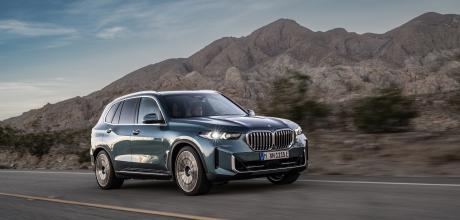2024 BMW X5 xDrive50e M Sport G05 LCI
BMW’s latest updates have made the X5 more modern than before, but will the tweaks to the hybrid system make it into a class leader?
First Drive: G05 LCI X5 xDrive50e M Sport
We get behind the wheel of the facelifted hybrid X5 to see what it’s like.
Revamping a popular car is fraught with difficulties and complications. Some old adage about fixing things that aren’t broken must surely give engineers sleepless nights, but progress is the key to staying ahead of the game. This is why BMW felt the need to update the X5 SUV, fitting new technology, fresh styling features and some reworked powertrains in a bid to maintain the upper hand against some of the most modern luxury SUVs in the business.
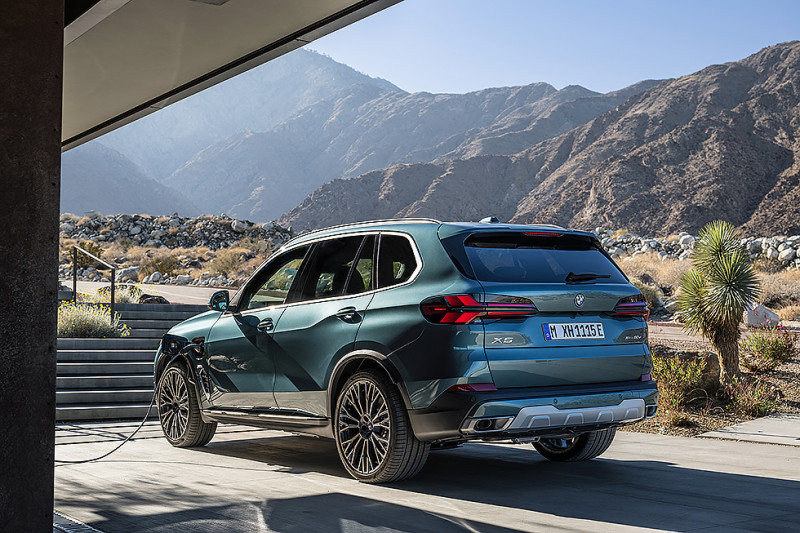
BMW’s slightly cautious approach is immediately obvious the moment you see the car, which looks broadly the same as its predecessor. All that’s really changed is the inclusion of new, narrower headlights with a kind of arrow signature and a new front bumper. There’s a new bumper design at the back, too, and BMW has fitted some new rear lights. And there’s the chance to install the Iconic Glow illuminated grille, which is available as part of an option pack. Trust us when we say it isn’t worth it.
Aside from small details such as wheel designs, paint colours and optional extras, that’s pretty much it for changes to the outside, and though the tweaks – that’s all they really are – come together neatly to create a slightly more modern aesthetic, it’s still recognisably an X5. Albeit one that’s had a bit of Botox. Bigger changes are evident inside, where BMW has made a more dramatic modification to the X5’s dashboard, removing the two-screen setup in favour of the new Curved Display, which is becoming common across the range. Combining both the instrument display and the touchscreen in one housing, the system uses BMW’s latest Operating System 8 software, making it look and feel much more modern than the old car’s screens. Not only are the displays sharper and clearer – particularly in the case of the instrument display – but they’re also more easily configured and slightly more intuitive to use. Part of the reason they’re so intuitive, though, is not because of any new innovation but because BMW has maintained one of the old car’s features. Despite the reorganisation of the centre console and the inclusion of a new togglestyle gear selector, the iDrive controller is still in situ, allowing you to navigate the system almost by feel, which reduces the need to keep looking at the screen to change any settings or find a new menu. Call it a safety device, if you will.
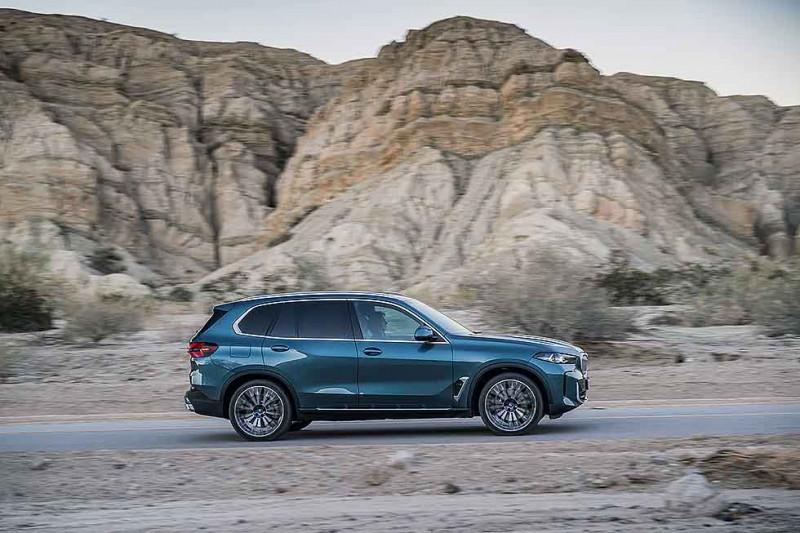
Perhaps less safe, on the other hand, is the new touch-sensitive climate control menus. In a bid to clean up the dashboard, BMW has essentially removed the old car’s heating and ventilation switchgear, preferring to house those controls in the touchscreen. And while that may have made life easier for the designers and the engineers, it doesn’t necessarily make life easier for the driver. Admittedly, it’s one of the better touchscreen climate control systems on the market, with the display you need never more than a screen tap away, but buttons are much easier to operate, particularly on the move. It isn’t all bad, though. The removal of the climate control buttons hasn’t just tidied the dashboard, but it has also allowed BMW to play some clever tricks with the ambient lighting. The illuminated sections in the decorative dashboard fascia will change to tell you when you’re getting a phone call, for example. It’s a bit of a gimmick, admittedly, but it’s a nice touch.
There’s nothing gimmicky about the amount of space available inside the X5. As before, the basic xDrive30d model comes with an ample 650 litres of carrying capacity, and that swells considerably if you fold the rear seats down. And for those who want more passenger space than boot space, BMW will also sell you the optional third row of seating, turning the X5 into an occasional seven-seater. Even if you stick with the conventional five-seater, though, the X5 will still be roomy and airy, with loads of legroom and headroom in the back.
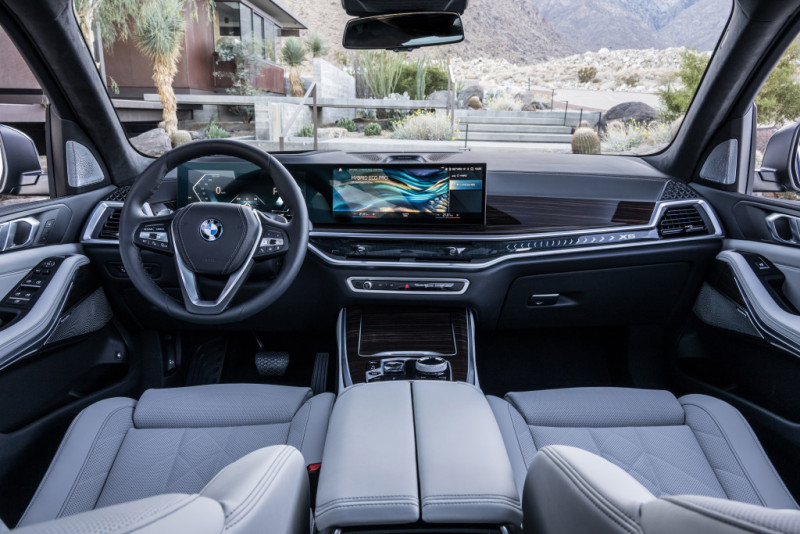
However, while that’s all well and good, it’s worth noting that the xDrive50e hybrid version we tested doesn’t have quite so much space inside. Passengers won’t notice the difference because the seating space is much the same, but packing their luggage into the boot might be slightly more difficult with just 500 litres of space available. A volume of 500 litres is still a lot – that’s about the same space you get from a 3 Series Touring, and nobody’s calling that cramped – but a 150-litre difference between the diesel and hybrid versions is definitely noticeable, and, it may put some customers off the plug-in variants.
But although the plug-in hybrid system may rob the car of some boot capacity, it’s still one of the biggest and most important changes to the new X5. That’s because the old and much-loved ‘45e’ hybrid system is gone, replaced with the new ‘50e’ model that takes everything great about the 45e and builds on it. As before, it’s powered by the same combination of electric motor and petrol engine, and the engine in question is still essentially the same twin-turbocharged, 3.0-litre straightsix unit. However, a few choice upgrades, including redesigned intake ports and combustion chambers, a tweaked ignition system and a cylinder head with an integrated exhaust manifold have allowed BMW to squeeze out an extra 27hp.
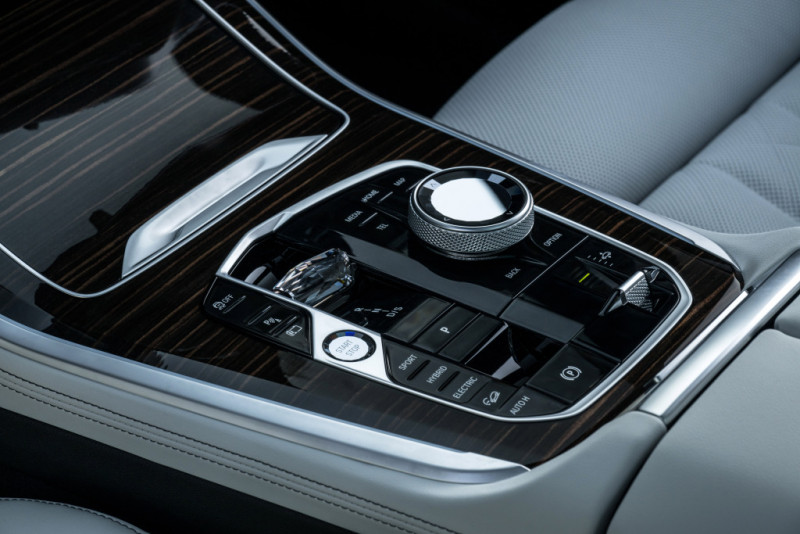
That brings the petrol engine’s output to 313hp, but the petrol engine isn’t all BMW has updated. The electric motor, which is integrated into the eight-speed automatic gearbox, now produces 197hp – an 83hp increase on the 45e’s motor – while the upper rev limit has risen to 11,500rpm. Combine that with the petrol engine, and the X5 xDrive50e gets a whopping 490hp, allowing it to get from 0-62mph in 4.8 seconds before accelerating to a top speed of 155mph. It’s pretty quick.
And on paper, at least, it’s pretty efficient. The rechargeable battery has grown, offering around 25% more usable capacity than its predecessor, with 25.7kWh available. That’s enough for between 58 and 68 miles of range on the official economy test, and though you’re unlikely to achieve that in the real world, our tests suggested around 50 miles should be fairly achievable if you avoid motorways. Either way, on the all-important WLTP tests, that official range allows the X5 to emit between 18 and 26 grams of carbon dioxide per kilometre, and that means the official economy stands at between 256.8 and 353.1mpg. Obviously, no customer is likely to achieve that – at least not regularly – but the fact remains that for those who mostly drive around town and can charge the battery at home, the 50e could prove surprisingly cheap to run.
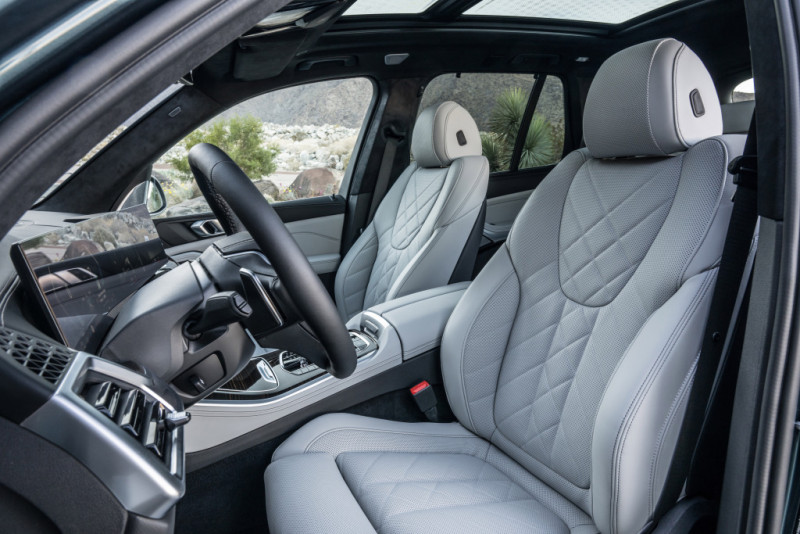
Naturally, though, the most likely customers are company car drivers, who’ll appreciate the tax benefits of the ultralow emissions and the long electric-only range, regardless of whether they charge the batteries very often. If they aren’t using a company fuel card, though that could quickly become an expensive business because while the petrol engine isn’t excessively thirsty, it’ll hardly provide diesel-like economy once the batteries run flat.
Realistically, though, most private customers will probably go for the much cheaper xDrive30d model, and we’ve no doubt they’ll be happy with it. The 298hp power output is more than sufficient, as is the 6.1-second 0-62mph time, and that six-cylinder diesel is smooth, punchy and efficient. But the 50e is a more impressive powertrain, with even more refinement and just as much performance, albeit with a higher price tag. When it’s running on electricity alone, the X5 is going to be quiet, but the straight-six petrol engine runs really smoothly and has a slightly sporty air about it, with all the right aural cues when you want to push on a bit. We particularly like the way it snorts during gear changes, then surges forward with a kind of aristocratic growl. It’s powerful but understated, and we respect that.
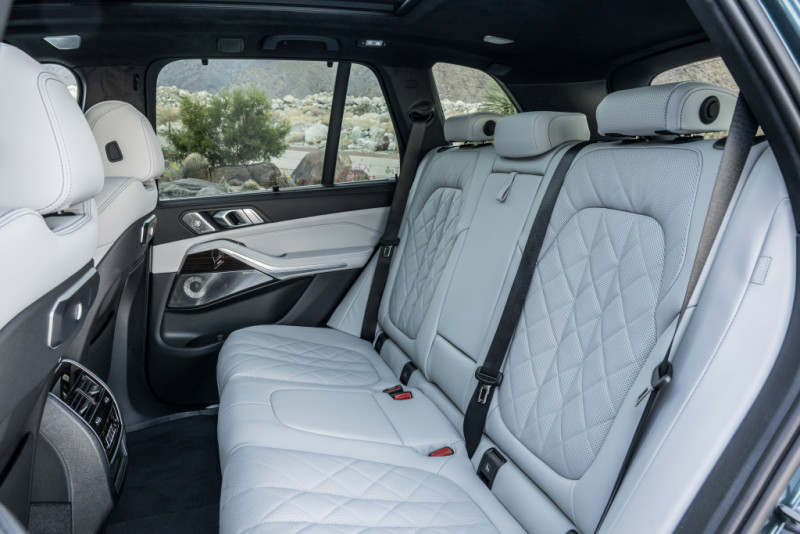
Not quite as much, though, as we respect the way the X5 drives. Even with that heavy hybrid system on board, it’s comfortable and luxurious, mixing that refinement with impressive comfort. Somehow, the X5 manages to float down the road – particularly on motorways – without ever losing its connection to the surface. Sometimes luxury cars can feel as though they have a mind of their own, and you’re just guiding them in vaguely the right direction, but the X5 doesn’t do that. Instead, the suspension just soaks up the imperfections while keeping the wheels planted.
That’s partly because the xDrive50e hybrid version comes with air suspension as standard, giving it some pillowy softness that’s missing slightly from more conventionally sprung models. That said, no version of the X5, including the sportier M60i, is what you’d call uncomfortable, and they all have that uncanny ability to soak up the road surface. Of course, there’s no hiding the car’s immense bulk or weight, and around town, even the air suspension can’t stop the hybrid version feeling a little more ponderous than its siblings, simply because that hybrid system drags it down into the potholes a little more. At higher speeds, though, it zips along smoothly, quietly and calmly, making it a very relaxing car in which to travel long distances, particularly for those in the passenger seats. But the seat to be in is definitely the one behind the wheel. Given the close relationship between old and new X5 models, perhaps it’s no surprise that this version is every bit as good to drive as its predecessor, but the brilliance of the X5 is still worthy of note.
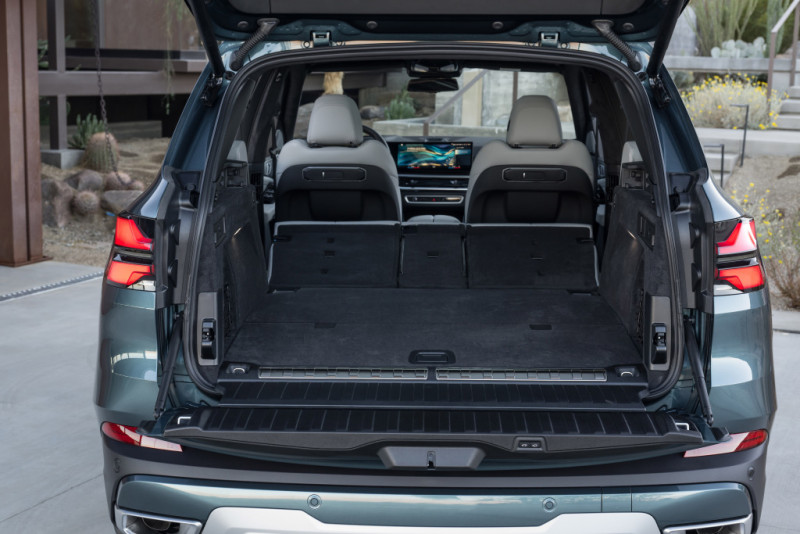
For all the X5’s comfort, the air suspension manages to keep the car feeling planted and stable, with less body roll than you might expect for something so cossetting. It feels a tad top-heavier than an X6, but, even without the optional Adaptive M Suspension Pro, which is available for all models except the hybrid and includes active roll stabilisation, the X5 is a remarkably enjoyable car to drive. For those familiar with the model over the years, that’ll come as no surprise – it has, after all, been the X5’s forte for some time, and BMW’s continued brilliance when it comes to pedal and steering feel is keeping the X5 up there with the best in the business. Just be wary of the driving modes that adjust the steering and brake feel because while they’re supposed to make the car feel sportier and more direct, they only succeed in adding false, disconcerting weight to the key controls.
All things considered, then, the X5 essentially picks up where its predecessor left off, albeit with some slightly sharper styling and largely improved interior technology. The loss of the climate control switchgear is an irritation, but not a disaster, and the new model makes up for that in other ways. But for those running around in a pre-facelift, 72-plate X5, don’t start worrying about moving it on prematurely. You aren’t missing much – the basic recipe is still just the same – and the new model has ensured the X5 will still be one of the key contenders in this class for a few years to come.
That’s partly down to the xDrive50e hybrid powertrain, which has incredibly managed to improve on the already brilliant 45e model. Again, though, the improvements are more prominent on paper than on the road. That said, the xDrive50e is still arguably the most interesting model in the new X5 range – certainly in terms of changes compared with the old car – but whether it will be the one to go for is another question. For the vast majority of customers, and particularly those buying an X5 privately, there’s no real reason to stray far from the basic xDrive30d. It might not be the sexiest option out there, but it’s a great all-rounder, and it’s the cheapest option in a range that seems to creep up in price every time we look at it.
The hybrid system robs the X5 of some of its boot space; new wheels are among the LCI changes
TECHNICAL DATA 2024 BMW X5 xDrive50e M Sport G05 LCI
- HYBRID SYSTEM: 3.0-litre twin-turbo B58B30 with 145kW electric motor and 25.7kWh lithium-ion battery
- MAX POWER: 490bhp
- MAX TORQUE: 516lb ft
- ACCLERATION 0-62MPH: 4.8 seconds
- TOP SPEED: 155mph
- ECONOMY: 256.8-353.1mpg
- CO2 EMISSIONS: 18-26g/km
- WEIGHT (EU): 2420kg
- PRICE (OTR): From £79,265
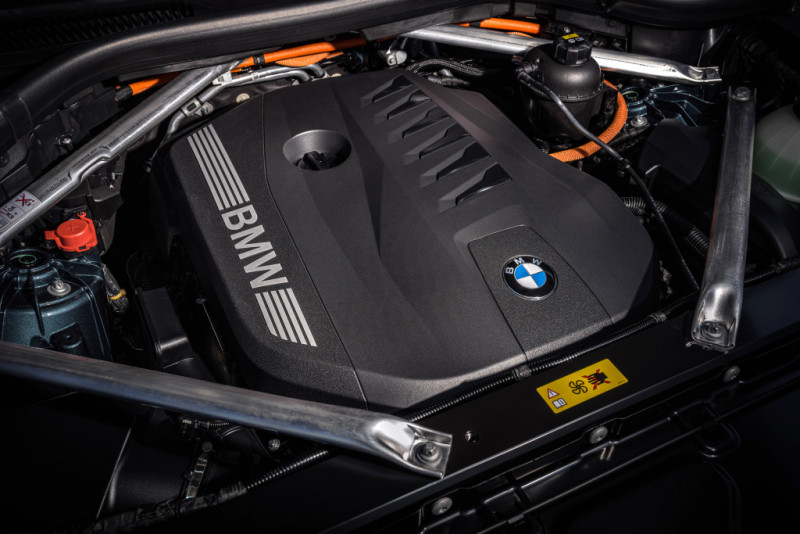
The 50e powertrain is superb, offering strong performance and impressive economy


